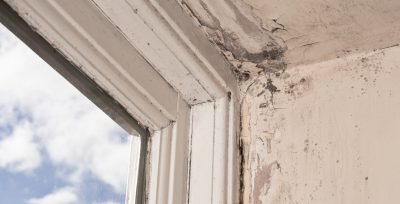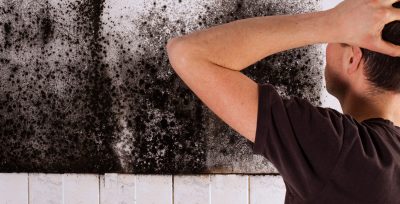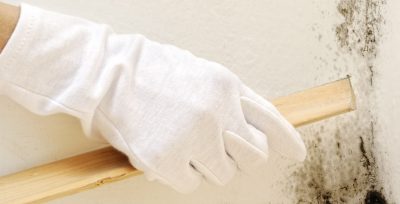Timber is the main construction material in home and buildings worldwide. Although timber is a durable building material, its structural integrity can easily be compromised by wet rot or dry rot if not protected.
Timber structures and building materials in an environment where there is excess moisture provide the optimal conditions for breeding wet pours. Excess moisture on timber can be as a result of dripping pipes, leaking roofs, overflowing tanks, poorly maintained washing machine and blocked gutters and other possible unending home defects.
All these home defects could have the same consequence of wet rot formation if they expose timber to damp for a prolonged time. Wet rot needs to be treated as early as possible to avoid irreversible property damages.
What causes wet rot?
Wet rot thrives on a constant supply of moisture. The sources of regular moisture are usually defective washing systems, gutters, stone pointing or even downpipes. If timber is exposed to excess moisture for some time, it creates the ideal environment for the germination and thriving of fungal spores. Timber eventually loses its structural integrity if not treated in the early stages of this process. For more information about wet rot formation, look for ‘what is wet rot’ in our webpage.
In cases where moisture control is impossible, or dry rot has already won a foot-hold, its crucial that you put treatment measures in place to deter the spread and growth of dry rot or wet rot fungus. Borate, or Boric acid is a recommendable fungicide that has been proved to kill dry rot. It also combats insects that damage wood e.g., termites. Wood treatment can be a preventive measure during construction or renovations, or as a treatment plan to stop the spread and terminate an existing infestation.
Wood can rot at any section of your home. The best solution for rotten wood is to replace all of it with new treated wood where possible. During the removal of the old rotten wood, it is crucial to cut 2 or 3 inches deeper into the non-affected wood around the rot. This ensures that no trace of wet rot has been left behind, thus decreasing the chances of a rot migration to the unaffected timber, and potentially restarting the infection. In cases where timber replacement is of the question, you can opt for other dry rot and wood repair solutions.
Wet Rot Related services in London
How can I stop wet rot on my own?
Wet rot damages can range from minimal manageable problems, like a squishy floorboard, to extensive damages that affect the structural framework of the house, e.g., damaged timber pillars. If your wet rot problem feels manageable on your own, the following DIY wet rot treatment tips would come in handy.
- Identify the sources of water moisture
After you have established the presence of wet rot, you should start looking for the source of the moisture. Wet rot problems that are near the washroom, sink or washing machine are usually obvious, and in most cases, caused by leaks which can easily be fixed. In cases where the source of the moisture cannot be spotted easily, for instance, rising damp, then it would in your best interest if you contacted a professional wet rot surveyor.
- Allow the timber to dry
You should then look for a method of drying out the region affected by wet rot — to get a clear view of the damaged wood which needs to be replaced.
- Remove affected timber
In sections where the timber has deep wet rot infections, you should remove the weakened sections. The weak timbers are easily identified by the cubically shaped damp cracks and localized stains of fungus on the surface.
- Evaluate the size of the job
You can salvage the unaffected timber around the wet rot for reusing when repairing the affected section. You can do this by fixing pieces of the new timber with the old ones.
- 5. Treat the timber
To prevent the timber fungus from growing again, you should take preventive measures by treating all the new and surrounding timber with a high-quality preservative. Before sealing the repaired section, ensure the area is completely dry.
- Be vigilant
Finally, you should be observant and look for any indicators of wet rot in the repaired section and the rest of the property. Catching wet rot at its early stages means little work.
- Do not risk if you cannot finish the job
A lot of people who are quickly excited by DIY projects usually have a feeling that there is nothing they wouldn’t fix, but caution should be taken when dealing with wet rot. This is because it can result in severe structural damages to your property if not handled effectively. That is why we advise you to immediately look for professional treatment services if the wet rot is in a section of the house where the structural integrity of property could be at risk.
Where can I find a wet rot expert?
You might find DIY steps highlighted above to be more complicated, or maybe you are busy, or maybe your wet rot problem could be more severe and needs a professional treatment plan. In such cases, always look for experienced and fully qualified professionals at Southern Damp Proofing.
You can reach us on 020 7971 1329, or get us through our online contact form.
Why choose Southern Damp Proofing
- Full reports are provided within 72 hours
- Meaningful and real meaningful guarantees
- Itemised and transparent costs
- Instant Onsite Diagnosis and Cost estimates
- Highly rated and trusted
- PCA Award winners
Frequently Asked Questions on How to Prevent Wet Rot
Where is wet rot more likely to occur?
How is wet rot treated?
What is wet rot?


